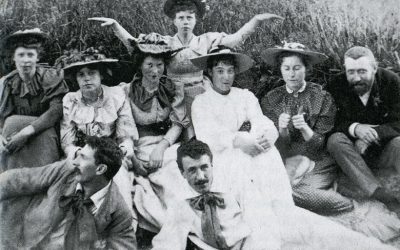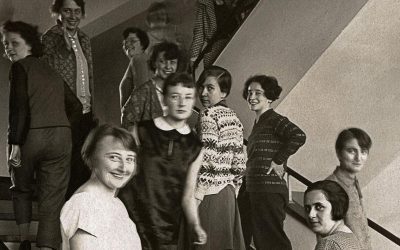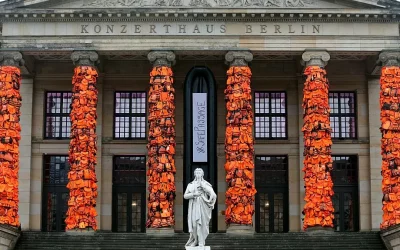Have you ever stood in front of an artwork and felt stuck, unable to express your story through your art? Many artists struggle to bridge the gap between their inner vision and their creative output. The challenge isn’t just about making something beautiful – it’s about making something that speaks to others and shares your unique perspective.
But here’s the truth: visual narrative techniques aren’t just for a gifted few. Every artist has stories worth telling, and your artistic voice development is key to sharing them. The real problem lies in understanding how to weave personal narrative art into your work in a way that resonates with viewers.
Fortunately, there’s a solution. By mastering the basics of visual storytelling, you can transform your art from simple images into powerful narratives that connect with your audience. Whether you work in paint, ceramics, or digital media, the principles of visual storytelling can help you create deeper, more meaningful work.
In this guide, we’ll explore how to turn your experiences and ideas into compelling visual stories. You’ll discover practical techniques to develop your unique voice and create art that doesn’t just catch the eye – it captures hearts and minds. Ready to start your journey into the world of visual storytelling?
Understanding Visual Narratives: Where Art Meets Story
Think of visual narratives as your personal artistic language. Like any language, it has its own vocabulary – made up of images, colours, and symbols that work together to tell your story. Visual art communication isn’t just about making pretty pictures; it’s about creating meaning that connects with your viewers in powerful ways. Whether you’re working on a canvas or shaping clay, every choice you make – from composition to colour – adds another word to your visual story.
Let’s break it down into something simple: telling stories through art is like having a conversation without words. When you understand the basics of visual narrative techniques, you can guide your viewer’s eye through your story, just like a writer guides readers through a book. The best part? You don’t need fancy art degrees to do this. All you need is to understand how different visual elements work together – like how certain colours make people feel, or how the placement of objects can draw attention to what matters most in your piece.
Finding Your Artistic Voice Through Personal Stories
Every artist has a unique story to tell, and artistic voice development starts with embracing your own experiences. Think about it – the things that have shaped your life, your views, and your emotions are the perfect foundation for creating art that truly means something. When you tap into personal narrative art, you’re not just making something that looks good – you’re sharing a piece of your journey that others can connect with.
The magic happens when you start exploring different ways to express your story. Maybe it’s through bold colours that show how you felt during a life-changing moment, or perhaps it’s through subtle textures that remind you of a special place. The key is to experiment and stay true to yourself. You don’t need to follow anyone else’s rules – your unique perspective is what will make your work stand out and resonate with others who might see themselves in your story.
The Female Gaze in Contemporary Art
The female gaze in art is reshaping how we see and tell women’s stories. Unlike traditional art that often shows women through others’ eyes, feminist visual language puts women in control of their own narratives. Today’s women artists are creating work that shows real experiences – from everyday moments to major life events – through their own authentic perspective. This shift is important because it gives us art that truly reflects women’s lives, dreams, and challenges.
Think about walking through a gallery and seeing art that speaks to your real experiences as a woman. That’s what the female gaze in contemporary art narratives is all about. Women artists are breaking free from old rules about how they should be shown in art. Instead of perfect, posed figures, we’re seeing honest portrayals that celebrate all kinds of beauty, strength, and identity. These artists use everything from bold colours to subtle textures to share stories about motherhood, career struggles, personal growth, and cultural experiences. The result? Art that doesn’t just show women – it reveals their inner worlds, hopes, and real-life experiences in ways that make us all feel seen and understood.
Symbolic Language: Creating Meaning Through Visual Elements
Symbolic art language is like a secret code that adds deeper meaning to your artwork. Every colour, shape, and object you choose can tell part of your story without using words. Think about how a simple symbol, like a butterfly, can mean change and growth, or how using warm colours can make people feel hopeful and energised. When you understand this visual language, you can pack your art with meaning that speaks straight to your viewer’s heart and mind.
Think of symbolic art elements like ingredients in a recipe – each one adds something special to the final piece. Take cultural symbolism in art, for example. Different cultures might see the same symbol in different ways, and that’s what makes it exciting. You can mix traditional symbols with your own personal meanings to create art that bridges different worlds and experiences. The best part is that there’s no single “right way” to use symbols – your unique take on them is what makes your art special.
Emotional Storytelling in Three-Dimensional Art
Ceramic art storytelling brings a whole new dimension to sharing emotions and experiences. Unlike flat artwork, three-dimensional pieces let you literally shape your story with your hands. The way clay moves and flows can capture feelings that words might miss. Every curve, texture, and hollow space becomes part of your emotional narrative, inviting people to not just look, but to move around and experience your story from different angles.
Emotional storytelling through art isn’t just about making something look good – it’s about creating pieces that make people feel something deep inside. When working with ceramics or other 3D materials, you can use height to show power, smooth surfaces to create calm, or rough textures to express struggle. Each choice you make helps tell your story in a way that connects with viewers on both a physical and emotional level. It’s like giving your feelings a form that others can see and almost touch.
Curating Your Story: From Concept to Exhibition
Art exhibition narratives are like chapters in a book – each piece needs to flow naturally into the next to tell your complete story. Curatorial storytelling isn’t just about hanging artwork on walls; it’s about creating an experience that guides visitors through your narrative in a way that makes sense and touches their hearts. The key is to think about how each piece contributes to your larger message and how viewers will move through the space to discover your story.
When you’re planning your exhibition, think about how each artwork connects to the others, just like pieces in a puzzle. Maybe one piece shows hope, while another reveals struggle, and together they paint a fuller picture of the experience you’re sharing. Art collection stories come alive when you carefully consider not just what you’re showing, but how you’re showing it – from the lighting that sets the mood to the way pieces are grouped together. Remember, your goal is to create an experience that stays with people long after they leave the exhibition space.
Building Cultural Bridges Through Visual Narratives
Cross-cultural art stories have an amazing power to connect people from different backgrounds. When we share our experiences through art, we create bridges that help people understand each other better, even when they don’t speak the same language. Visual art communication becomes a universal language that everyone can understand, whether you’re looking at a painting from Japan, a sculpture from Nigeria, or a ceramic piece from Mexico. Each artwork opens a window into someone else’s world, helping us see life through their eyes.
Think of these stories as conversations that happen without words. Artists can share their cultural traditions, celebrations, and everyday life through colours, shapes, and symbols that speak to people from all walks of life. Whether it’s through paintings, photographs, or ceramics, these visual stories help break down walls between communities and foster understanding. They remind us that while our traditions might be different, our hopes, dreams, and feelings often share common ground. This kind of storytelling brings people together, helping us celebrate our differences while finding the threads that connect us all.
Conclusion
As you embark on your journey of visual storytelling, remember that your unique experiences and perspective are your greatest assets. Don’t be afraid to experiment with different techniques and symbols to bring your stories to life. Whether you’re working with paint, clay, or digital media, the key is to stay true to your voice and let your art speak from the heart.
By applying the strategies we’ve discussed, you can create art that not only catches the eye but also touches the soul. Your work has the power to bridge cultures, challenge perspectives, and inspire others. So go ahead, pick up your tools, and start weaving your stories into your art. The world is waiting to hear what you have to say.
If you need more guidance or have questions about visual storytelling, feel free to reach out to me at semra@semrajelil.com. I’m here to help you on your artistic journey.
FAQs:
1. Q: What is visual storytelling in art?
A: Visual storytelling is using images, colours, and shapes to tell a story or share an idea without words.
2. Q: How can I find my artistic voice?
A: Explore your personal experiences, try different art styles, and practice regularly to develop your unique way of creating art.
3. Q: What is the female gaze in art?
A: The female gaze shows women’s experiences from their own point of view, rather than how others see them.
4. Q: How can I use symbols in my art?
A: Choose objects or colours that have special meanings to you or your culture, and include them in your artwork to add deeper meaning.
5. Q: Can I tell stories through 3D art like ceramics?
A: Yes! Use shapes, textures, and forms in your 3D art to express feelings and ideas just like you would in 2D art.
6. Q: How do I plan an art exhibition?
A: Think about how your artworks connect to each other and arrange them in a way that guides viewers through your story.
7. Q: Can art help people understand different cultures?
A: Absolutely! Art can show parts of your culture that help others learn about and appreciate different ways of life.
8. Q: Do I need special training to tell stories through art?
A: While training can be helpful, anyone can learn to tell stories through art with practice and by exploring their own experiences.
9. Q: How can I make my art more meaningful?
A: Include personal experiences, emotions, and ideas that matter to you in your artwork to make it more meaningful.
10. Q: What if I’m not good at drawing realistic images?
A: You don’t need to draw realistically to tell stories through art. Abstract shapes, colours, and symbols can be just as powerful for storytelling.




0 Comments